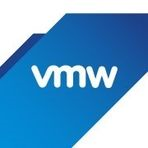The Great Migration: Companies Abandon VMware Amid Rising Costs and Open Source Vulnerabilities
December 5, 2024, 11:56 pm
In the tech world, change is the only constant. Recently, a seismic shift has occurred as companies flee VMware, driven by skyrocketing subscription costs. The catalyst? Broadcom's acquisition of VMware for a staggering $69 billion. This deal has sent ripples through the industry, prompting organizations to seek alternatives. The British cloud provider Beeks Group is just one example. They ditched VMware for OpenNebula, a move that echoes a growing trend.
Broadcom's strategy has been clear: maximize profits. After the acquisition, they hiked VMware's subscription prices up to tenfold. This left many companies gasping for air. The promise of a "transition period" with frozen prices quickly evaporated. Instead, small and medium-sized enterprises found themselves cornered, facing steep licensing requirements and diminished support. The once-familiar landscape of VMware has morphed into a treacherous terrain.
OpenNebula has seized this opportunity. They are actively courting disenchanted VMware customers. Their message is simple: switch to us for significant savings. OpenNebula claims potential cost reductions of up to 30 times, especially for high-core servers. They offer a lifeline, promising no vendor lock-in and a user-friendly experience. This is a siren call for those feeling the financial squeeze from Broadcom's aggressive pricing.
The shift away from VMware is not just about cost. It’s about control. Companies are tired of being at the mercy of corporate giants. Broadcom's approach has been to cater to large enterprises, leaving smaller players in the dust. This strategy is not without consequences. As companies like Beeks Group abandon ship, the implications for Broadcom could be dire. Losing a client managing over 20,000 virtual machines is no small feat.
Meanwhile, the open-source community is grappling with its own challenges. A recent report from Lineaje highlights vulnerabilities in global software supply chains, particularly concerning open-source components. Over 95% of security vulnerabilities stem from these dependencies. This revelation raises alarms for organizations relying on open-source software. The risks are real and growing.
The report reveals that a significant portion of open-source contributions comes from the United States, followed by Russia and other nations. This international mix introduces geopolitical risks. As nation-state cyberattacks rise, the origin of code becomes critical. Companies must navigate this complex landscape carefully.
In the U.S., 20% of open-source contributions are anonymous. This anonymity breeds uncertainty. Dubious origins can hide malware or backdoors, posing severe risks. The report indicates that 5-8% of open-source components are potentially compromised. This is a ticking time bomb for organizations that fail to scrutinize their software supply chains.
Moreover, maintenance issues plague the open-source ecosystem. The Lineaje report states that 70% of open-source components are poorly maintained or entirely unmaintained. Surprisingly, unmaintained components are less vulnerable than their well-maintained counterparts. This paradox complicates risk assessment. The layers of dependencies in open-source projects create a tangled web, making it difficult to pinpoint vulnerabilities.
The diversity of coding languages adds another layer of complexity. A typical mid-sized application can involve 1.4 million lines of code across 139 languages. This increases the likelihood of using memory-unsafe languages, which are notorious for security flaws. The larger the team, the greater the risk. Small teams produce 330% more risky projects, while larger teams also exceed risk thresholds.
The message is clear: organizations must take a hard look at their software strategies. The migration from VMware is a symptom of a larger issue. Companies are seeking alternatives that offer not just cost savings but also security and control. OpenNebula's rise is a testament to this shift.
As the tech landscape evolves, the importance of understanding software origins cannot be overstated. Organizations must become vigilant. The complexity of open-source software demands thorough scrutiny. Blind reliance on third-party components is a recipe for disaster.
In conclusion, the tech industry is at a crossroads. Companies are abandoning VMware in droves, seeking refuge in open-source solutions. The vulnerabilities highlighted by Lineaje serve as a stark reminder of the risks inherent in software supply chains. As organizations navigate this tumultuous terrain, the call for transparency and security has never been louder. The future belongs to those who adapt, innovate, and prioritize safety in their software choices. The tide is turning, and those who fail to recognize it may find themselves left behind.
Broadcom's strategy has been clear: maximize profits. After the acquisition, they hiked VMware's subscription prices up to tenfold. This left many companies gasping for air. The promise of a "transition period" with frozen prices quickly evaporated. Instead, small and medium-sized enterprises found themselves cornered, facing steep licensing requirements and diminished support. The once-familiar landscape of VMware has morphed into a treacherous terrain.
OpenNebula has seized this opportunity. They are actively courting disenchanted VMware customers. Their message is simple: switch to us for significant savings. OpenNebula claims potential cost reductions of up to 30 times, especially for high-core servers. They offer a lifeline, promising no vendor lock-in and a user-friendly experience. This is a siren call for those feeling the financial squeeze from Broadcom's aggressive pricing.
The shift away from VMware is not just about cost. It’s about control. Companies are tired of being at the mercy of corporate giants. Broadcom's approach has been to cater to large enterprises, leaving smaller players in the dust. This strategy is not without consequences. As companies like Beeks Group abandon ship, the implications for Broadcom could be dire. Losing a client managing over 20,000 virtual machines is no small feat.
Meanwhile, the open-source community is grappling with its own challenges. A recent report from Lineaje highlights vulnerabilities in global software supply chains, particularly concerning open-source components. Over 95% of security vulnerabilities stem from these dependencies. This revelation raises alarms for organizations relying on open-source software. The risks are real and growing.
The report reveals that a significant portion of open-source contributions comes from the United States, followed by Russia and other nations. This international mix introduces geopolitical risks. As nation-state cyberattacks rise, the origin of code becomes critical. Companies must navigate this complex landscape carefully.
In the U.S., 20% of open-source contributions are anonymous. This anonymity breeds uncertainty. Dubious origins can hide malware or backdoors, posing severe risks. The report indicates that 5-8% of open-source components are potentially compromised. This is a ticking time bomb for organizations that fail to scrutinize their software supply chains.
Moreover, maintenance issues plague the open-source ecosystem. The Lineaje report states that 70% of open-source components are poorly maintained or entirely unmaintained. Surprisingly, unmaintained components are less vulnerable than their well-maintained counterparts. This paradox complicates risk assessment. The layers of dependencies in open-source projects create a tangled web, making it difficult to pinpoint vulnerabilities.
The diversity of coding languages adds another layer of complexity. A typical mid-sized application can involve 1.4 million lines of code across 139 languages. This increases the likelihood of using memory-unsafe languages, which are notorious for security flaws. The larger the team, the greater the risk. Small teams produce 330% more risky projects, while larger teams also exceed risk thresholds.
The message is clear: organizations must take a hard look at their software strategies. The migration from VMware is a symptom of a larger issue. Companies are seeking alternatives that offer not just cost savings but also security and control. OpenNebula's rise is a testament to this shift.
As the tech landscape evolves, the importance of understanding software origins cannot be overstated. Organizations must become vigilant. The complexity of open-source software demands thorough scrutiny. Blind reliance on third-party components is a recipe for disaster.
In conclusion, the tech industry is at a crossroads. Companies are abandoning VMware in droves, seeking refuge in open-source solutions. The vulnerabilities highlighted by Lineaje serve as a stark reminder of the risks inherent in software supply chains. As organizations navigate this tumultuous terrain, the call for transparency and security has never been louder. The future belongs to those who adapt, innovate, and prioritize safety in their software choices. The tide is turning, and those who fail to recognize it may find themselves left behind.

